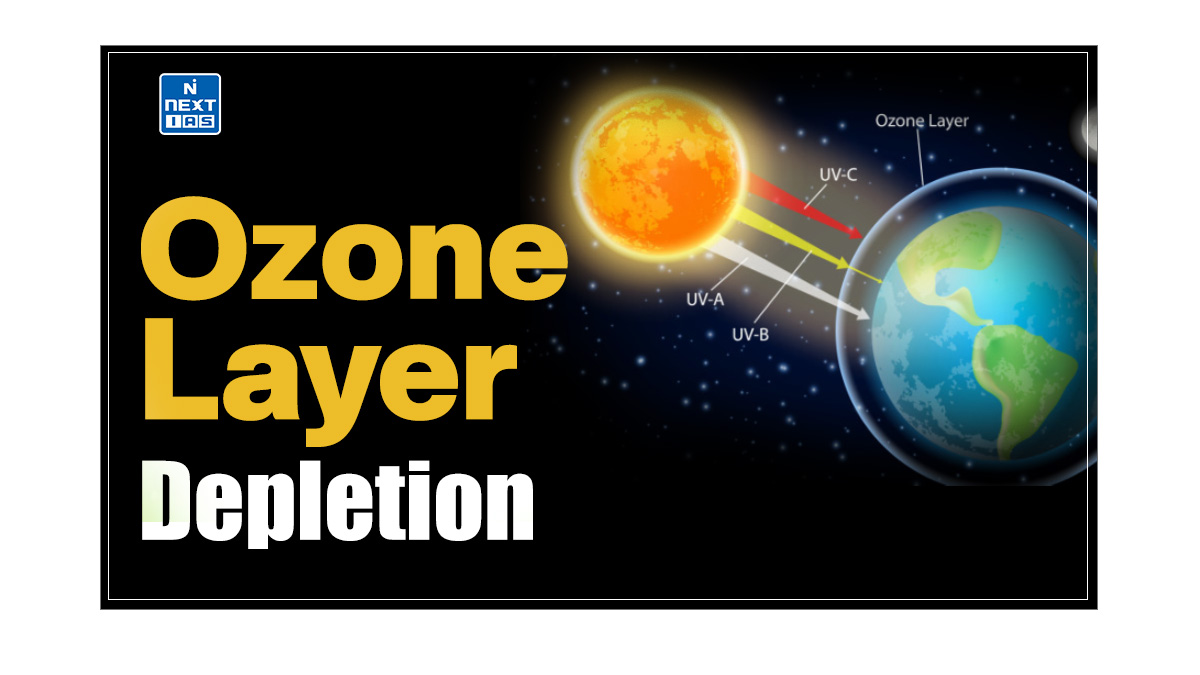
Geo-engineering, or Climate Engineering, is emerging as a potential solution to mitigate the impacts of climate change. This article aims to study in detail the concept of Geo-Engineering (Climate Engineering), its meaning, techniques, methods, applications, significance, and other related concepts.
What is Geo-engineering or Climate Engineering?
- Geoengineering or Climate engineering describes a wide and largely hypothetical array of technologies and techniques for manipulating the global climate to alleviate or block some of the effects of climate change.
- It is usually done by removing CO2 from the air or limiting the amount of sunlight reaching the planet’s surface.
Working in Geo-engineering or Climate Engineering
- Geo-engineering is based on two aspects:
- Removal of the Greenhouse gases, especially carbon dioxide, from the atmosphere and
- Managing solar radiations.
- Both these aspects of Geo-engineering (Climate Engineering) have been discussed in detail in the sections that follow:
Greenhouse Gas Removal
- The greenhouse gas removal approach seeks to remove carbon dioxide and other greenhouse gases from the atmosphere.
- Some of the techniques used for the same include the following:

- Bio-energy with carbon capture and storage to sequester carbon and simultaneously provide energy.
- Carbon air capture removes carbon dioxide from the air.
- Afforestation, reforestation and forest restoration to absorb carbon dioxide.
- Ocean fertilization is based on the purposeful introduction of nutrients to the upper ocean to increase marine food production, create a natural carbon sink, and remove carbon dioxide from the atmosphere.
Solar Radiation Management
- Solar radiation management approaches are designed to reduce the absorption of sunlight and reflect sunlight away from Earth.
- Some of the Solar radiation management methods are described as follows:
- Surface-based: Using pale-coloured roofing materials, attempting to change the brightness of the ocean, or growing high-albedo crops.
- Troposphere-based: Marine cloud brightening would spray fine seawater to whiten clouds and thus increase cloud reflectivity.
- Upper Atmosphere-based: Creating reflective aerosols, such as stratospheric sulfate aerosols, specifically designed self-levitating aerosols or other substances.
- Space-based: Space sunshades are put up to obstruct solar radiation with space-based mirrors, dust, etc.
Various Geoengineering Techniques
Some of the prominent Geo-engineering techniques can be seen as follows:
Bio-energy with Carbon Capture and Storage (BECCS)
- It is the process of extracting bio-energy from biomass and capturing and storing the carbon, thereby removing it from the atmosphere.
- The carbon in biomass comes from the greenhouse gas carbon dioxide (CO2), which is extracted from the atmosphere by biomass when it grows.
- Energy is extracted in useful forms (electricity, heat, biofuels, etc.) as the biomass is utilised through combustion, fermentation, pyrolysis or other conversion methods.
Ocean Fertilization or Ocean Nourishment
- Ocean fertilisation is a type of climate engineering based on intentionally introducing nutrients to the upper ocean to increase marine food production and remove carbon dioxide from the atmosphere.
- Some techniques, including fertilisation by iron, urea and phosphorus, have been proposed.
Soil Carbon Sequestration (SCS)
- Soils can serve as sinks for carbon dioxide since atmospheric concentrations have crossed 410 parts per million and oceans are already turning acidic.
- Carbon sequestration in soils has the potential to offset GHG emissions from fossil fuels by up to 15% annually.
- Soil organic carbon (SOC) comes from plants, animals, microbes, leaves, and wood, and it is mostly found in the first metre or so.
- Many conditions and processes determine changes to SOC content, including temperature, rainfall, vegetation, soil management, and land-use change.
Stratospheric Aerosol Injection (SAI)
- SAI is the main type of solar radiation management (SRM) .
- In the case of SAI, gases are pumped into the stratosphere to reflect some of the sun’s heat, mimicking an effect that happens naturally in a strong volcanic eruption.
- Generally, the compounds used are sulphur dioxide or finely powdered calcium carbonate as aerosols.
- The scale of SAI makes its governance difficult — implementing it in one country can trigger rain and extreme weather across borders.
- Lack of public support might be the biggest hurdle.
Marine Cloud Brightening (MCB)
- MCB involves reflecting sunlight away from the earth in some way.
- In this case, sea salt or other particles are sprayed into marine clouds to make them thicker and more reflective.
Cirrus Cloud Thinning (CCT)
- CCT is almost the opposite of marine cloud brightening. High-altitude Cirrus clouds are thin and whispy, so they don’t reflect much solar radiation into space and instead trap long-wave radiation on Earth.
- CCT proposes thinning them further through cloud seeding, letting more long-wave radiation escape.
Advantages of Geo-engineering (Climate Engineering)
Geo-engineering, or Climate Engineering, offers several potential benefits, as can be seen as follows:
- Climate Stabilization: Provides a means to stabilise global temperatures and counteract the effects of climate change if traditional mitigation efforts fall short.
- Cost-effective: Some geoengineering methods, like reducing greenhouse gas emissions, might be more cost-effective than traditional mitigation strategies.
- Complement to Mitigation: Acts as an additional tool alongside emission reduction strategies to achieve climate goals more effectively.
- Emergency Response: This can serve as a temporary solution to rapidly reduce global temperatures in case of severe climate emergencies.
Commercial Use of Sequestrated Carbon dioxide
- Used in making chemicals like hydrochloric acid and dry ice.
- Used in the fertiliser industry to make urea.
- Used in the preservative industry in making refrigeration systems, inert agent for food packaging.
- Used in the food industry to make baking soda, alcohol and beverages.
- Used in horticulture.
- Used in the paper industry.
- Used in industries like welding systems, fire extinguishers, etc.
- Used in water treatment processes.
- Used to make raw material for producing carbon-based fuels with the help of additional energy.
- Used in the packaging industry in the development of new plastic and polymers.
- Used in the making of concrete and coal tar for roads.
Challenges in Geo-engineering (Climate Engineering)
Some of the prominent challenges coming in the way of Geo-engineering (Climate Engineering) are as follows:
- Geo-engineering methods may need to be more effective when applied on a large scale.
- For example, the Marine cloud brightening may lead to some unforeseen event when implemented on a large scale.
- These methods may also have moral hazard.
- For example, if these technologies are implemented, there will be a lack of political and social will to invest in methods to reduce carbon emissions at source.
- Inadequate International laws is currently insufficiently tailored to the particular assessment challenges posed by Geo-engineering.
- If the Geo-engineering projects fail then there can be no concrete impact assessments that can be done on how the climate will react to the change introduced.
- Geo-engineering projects are very costly to implement.
- The introduction of aerosols in the area or changing the marine composition may affect the regional climate.
- These may also be a reason for the depletion of the Ozone layer, as aerosols serve as a surface for chemical reactions that destroy ozone.
Conclusion
Geo-engineering (Climate Engineering) represents a complex and evolving field with the potential to complement traditional climate change mitigation strategies. While it offers promising solutions to address global warming, careful consideration of its risks, ethical implications, and governance is crucial. As climate change continues to pose significant challenges, understanding and evaluating Geo-engineering technologies will be essential for developing comprehensive strategies to protect the environment and ensure a sustainable future.
Frequently Asked Questions (FAQs)
What is Geo-Engineering?
Geo-Engineering refers to large-scale interventions in the Earth’s climate system to combat or reverse climate change. It includes techniques like solar radiation management and carbon dioxide removal to reduce global warming.
What is Climate Engineering?
Climate Engineering is synonymous with geoengineering and involves deliberate modifications to the Earth’s climate system to mitigate the impacts of climate change. It encompasses strategies to reflect sunlight or remove greenhouse gases from the atmosphere.
What is Geo Informatics Engineering?
Geoinformatics engineering combines geospatial data with information technology to analyse and manage geographic information. It includes applications like mapping, remote sensing, and spatial analysis to support decision-making in various fields, including environmental management and urban planning.






